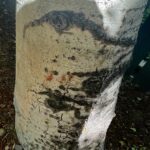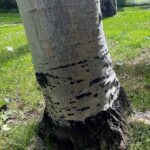Cytospora Canker
Cytospora canker is a fungal disease that can affect various species of trees and shrubs. It is caused by several species of the fungal genus Cytospora, which can infect the bark of a tree or shrub, causing it to become discolored and eventually die.
Symptoms of Cytospora canker vary depending on the host plant, but generally involve a sunken area of dead or discolored bark, often with small, black fruiting bodies visible on the surface. Affected branches or twigs may wilt or die back, and the overall growth of the plant may be stunted. In severe cases, the entire tree or shrub may die.
Cytospora canker is commonly found on many species of trees, including pine, spruce, fir, aspen, and willow. The fungus enters the tree through wounds, such as pruning cuts or natural openings in the bark. It can also spread through infected pruning tools, so it's important to sanitize tools between uses to prevent the spread of the disease.
Once a tree or shrub is infected with Cytospora canker, there is no cure. However, there are steps that can be taken to manage the disease and prevent its spread. These include removing and destroying infected branches or twigs, keeping trees healthy with proper watering and fertilization, and avoiding pruning during wet weather.
Prevention is the key to controlling Cytospora canker. Trees that are weakened by drought, insect infestations, or other stressors are more susceptible to the disease. Proper care of the tree or shrub, including regular watering and fertilization, can help to prevent stress and make the plant less vulnerable to infection.
In summary, Cytospora canker is a fungal disease that can infect various species of trees and shrubs, leading to a sunken area of dead or discolored bark, wilted branches, and stunted growth. There is no cure for the disease, but proper care and prevention can help to manage the disease and prevent its spread.




